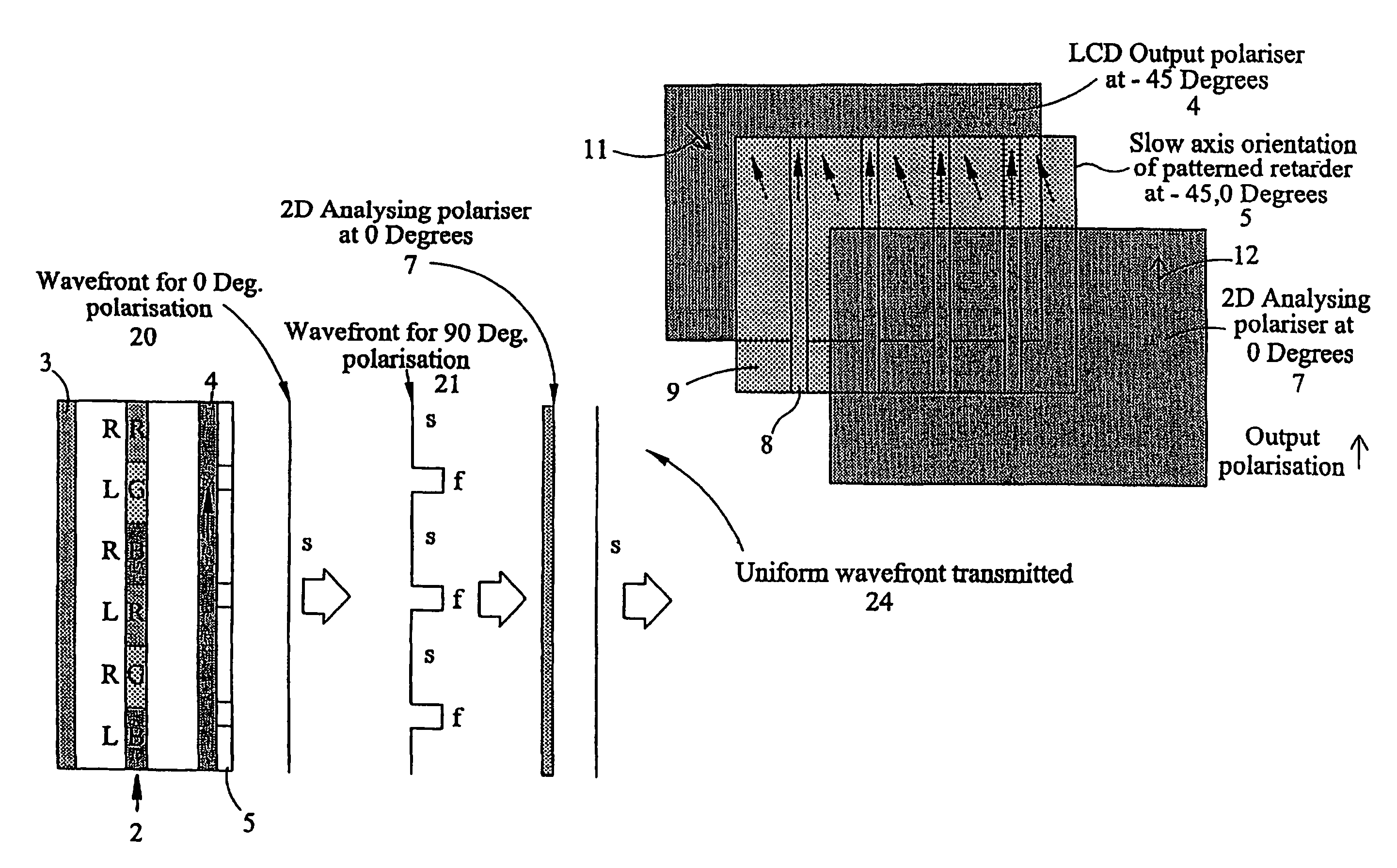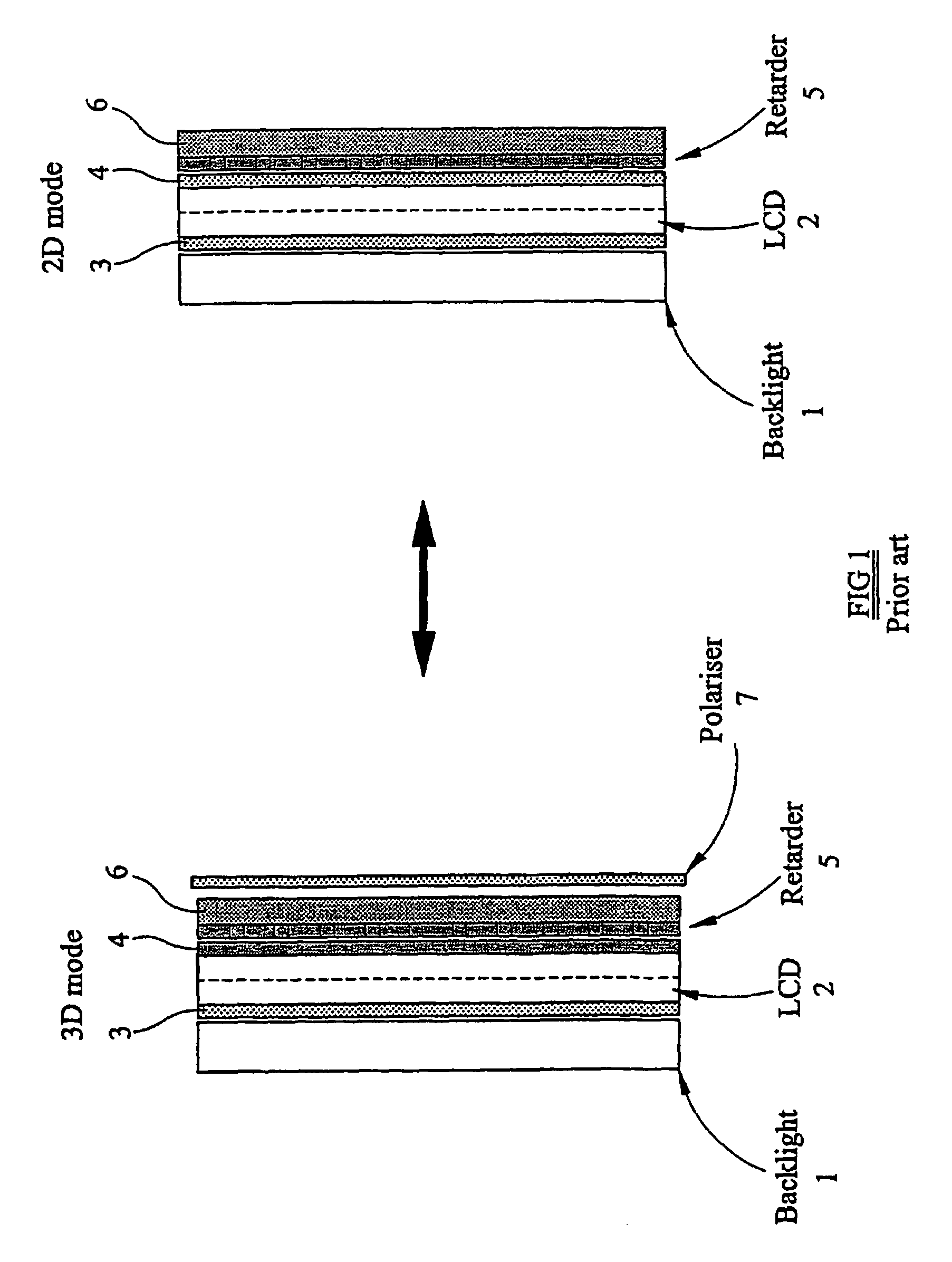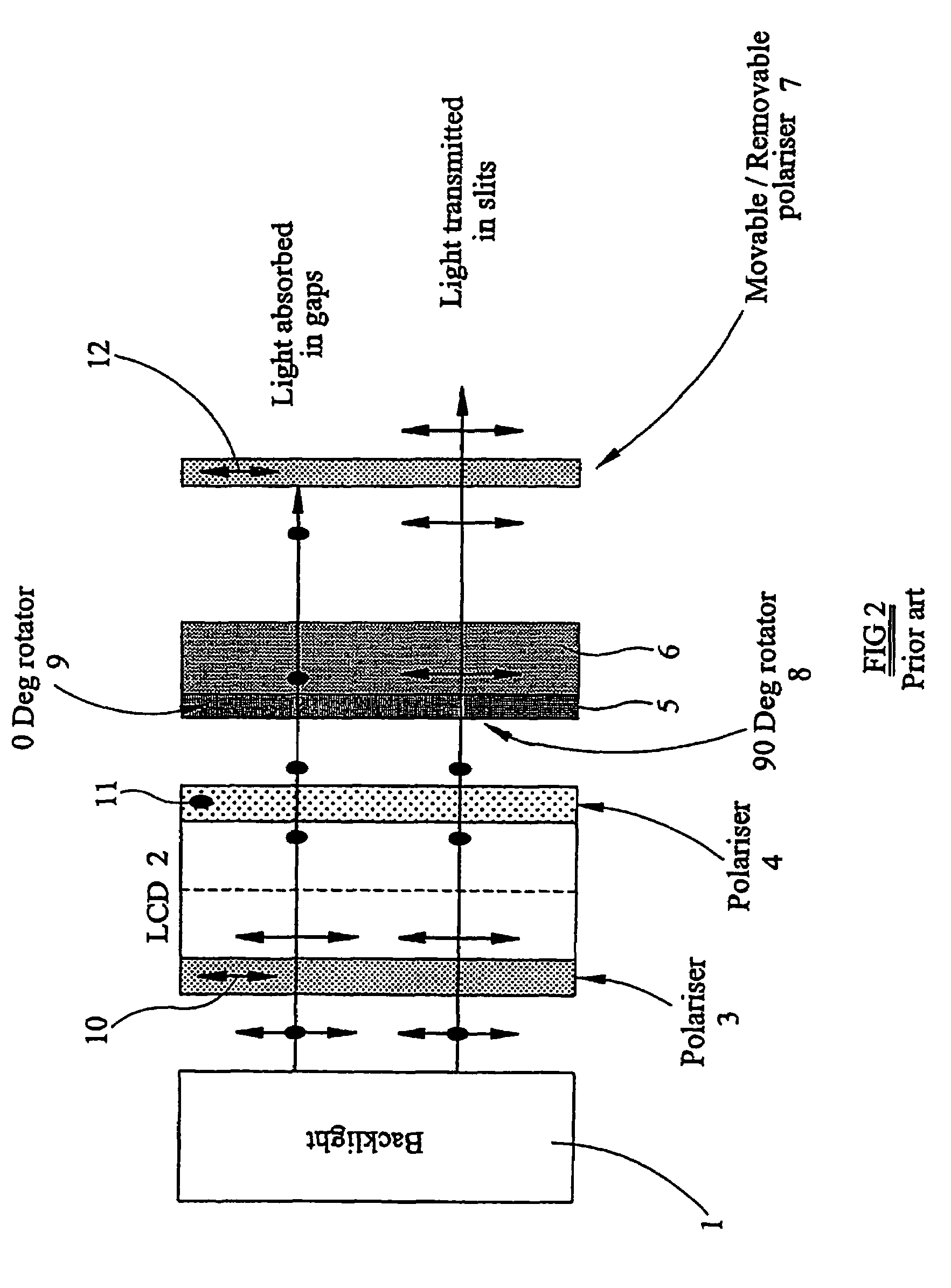Optical device and display operating in two dimensional and autostereoscopic three dimensional modes
a technology of optical devices and display screens, applied in the field of optical devices, can solve the problems of light paths that can interfere with each other, variation in brightness in the 2d mode across the display, etc., and achieve the effect of reducing crosstalk and improving the achromaticity of bright and dark states
- Summary
- Abstract
- Description
- Claims
- Application Information
AI Technical Summary
Benefits of technology
Problems solved by technology
Method used
Image
Examples
Embodiment Construction
[0067]Hereinafter, the present invention will be described by way of examples with reference to the drawings.
[0068]FIG. 6 illustrates an optical device constituting an embodiment of the invention and forming part of an autostereoscopic display, also constituting an embodiment of the invention and having an autostereoscopic 3D mode of operation and a 2D mode of operation. The 2D mode of operation is illustrated in FIG. 6 and, in this mode, the device and display of FIG. 6 differ from that of FIG. 5 in that the transmission axis 12 of the output polariser 7 is oriented at 45° to the transmission axis 11 of the polariser 4, which comprises an output polariser of a liquid crystal display (LCD) 2 forming a spatial light modulator.
[0069]Because liquid crystal devices are typically arranged with the transmission axis 11 of their output polarisers at −45° to the image vertical of the image displayed by such devices, this is the orientation which is illustrated in FIG. 6 and the other drawin...
PUM
| Property | Measurement | Unit |
|---|---|---|
| polarization rotation | aaaaa | aaaaa |
| refractive index | aaaaa | aaaaa |
| refractive index | aaaaa | aaaaa |
Abstract
Description
Claims
Application Information
 Login to View More
Login to View More - R&D
- Intellectual Property
- Life Sciences
- Materials
- Tech Scout
- Unparalleled Data Quality
- Higher Quality Content
- 60% Fewer Hallucinations
Browse by: Latest US Patents, China's latest patents, Technical Efficacy Thesaurus, Application Domain, Technology Topic, Popular Technical Reports.
© 2025 PatSnap. All rights reserved.Legal|Privacy policy|Modern Slavery Act Transparency Statement|Sitemap|About US| Contact US: help@patsnap.com



